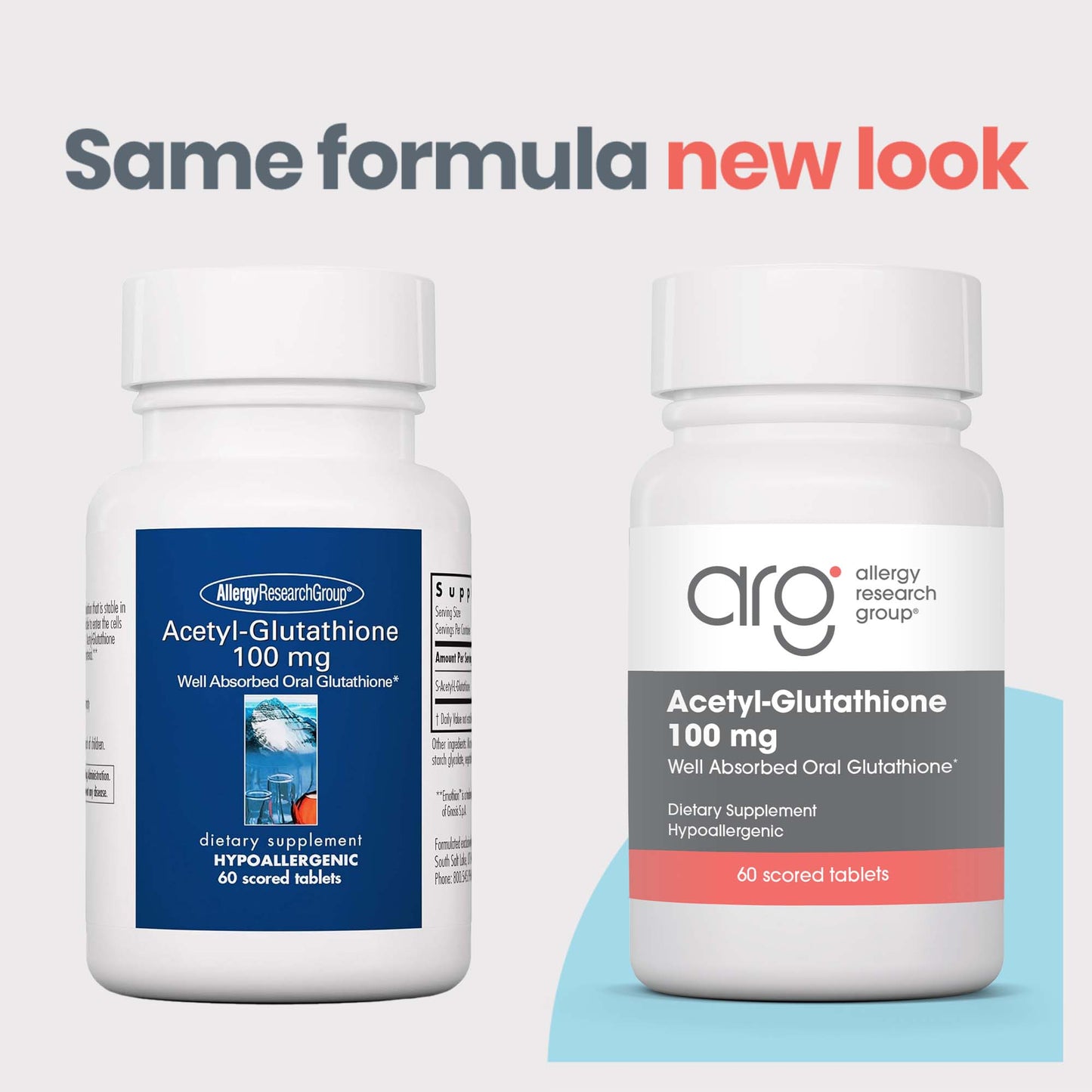Stomach-Stable Glutathione for Cellular Protection, Detoxification, and Mitochondrial Health*
What It Does
Acetyl-Glutathione 100 mg delivers a stable, bioavailable form of glutathione to support antioxidant defense, detoxification, mitochondrial health, and cellular signaling.* It bypasses digestive degradation to increase glutathione availability directly within cells, supporting resilience against oxidative stress and promoting healthy aging.*
How It Works
• S-Acetyl-L-Glutathione (SAG): Acetylation protects glutathione from digestive breakdown, allowing direct cellular uptake and conversion to active GSH within the cytosol and mitochondria.*[8]
• Glutathione (GSH): Glutathione provides major intracellular antioxidant activity, GSH is essential for neutralizing free radicals, regenerating vitamins C and E, supporting mitochondrial energy metabolism, and protecting DNA from oxidative stress.*[1-2]
• Detoxification Support: GSH is critical for liver and kidney detox pathways, aiding clearance of xenobiotics, metabolic byproducts, and pharmaceuticals.*[3]
• Cellular Regulation: GSH influences cytokine production, gene expression, and immune signaling, contributing to healthy tissue maintenance and immune balance.*[3]
• Healthy Aging: Glutathione status is associated with aging.* GGT, a surrogate biomarker, is inversely correlated with glutathione.*[1,5,6]
• Superior Bioavailability: Compared to oral reduced glutathione, SAG avoids enzymatic degradation, exhibits a longer half-life, and is more efficiently absorbed and utilized.*[7-8]
Who It’s For
Ideal for individuals seeking advanced antioxidant activity and detoxification support, especially those under stressful conditions.* Suitable for those who do not tolerate or prefer not to use liposomal or suppository glutathione.*
Special Features
Each tablet delivers 100 mg of S-acetyl-L-glutathione using Emothion® which is a premium, high-purity glutathione material. This form is stable, well-tolerated, and easy to take daily.
References
1. Hristov BD. Cureus. 2022;14(9):e29696. doi:10.7759/cureus.29696
2. Kwon DH, et al. Antioxidants. 2019;8(4):82. doi:10.3390/antiox8040082
3. Wu G, et al. J Nutr. 2004;134(3):489–92. doi:10.1093/jn/134.3.489
4. Richie JP, et al. Eur J Nutr. 2014;54(2):251–63. doi:10.1007/s00394-014-0706-z
5. Pinkham CA, Krause KJ. J Insur Med. 2009;41:170–77
6. Palmier J, Lanzrath BJ. J Insur Med. 2012;43:162–68
7. Wei T, et al. Acta Materia Medica. 2022;1(2):177–92. doi:10.15212/AMM-2022-0005
8. Fanelli S, et al. Int J Clin Nutr Diet. 2018;4(2). doi:10.15344/2456-8171/2018/134





